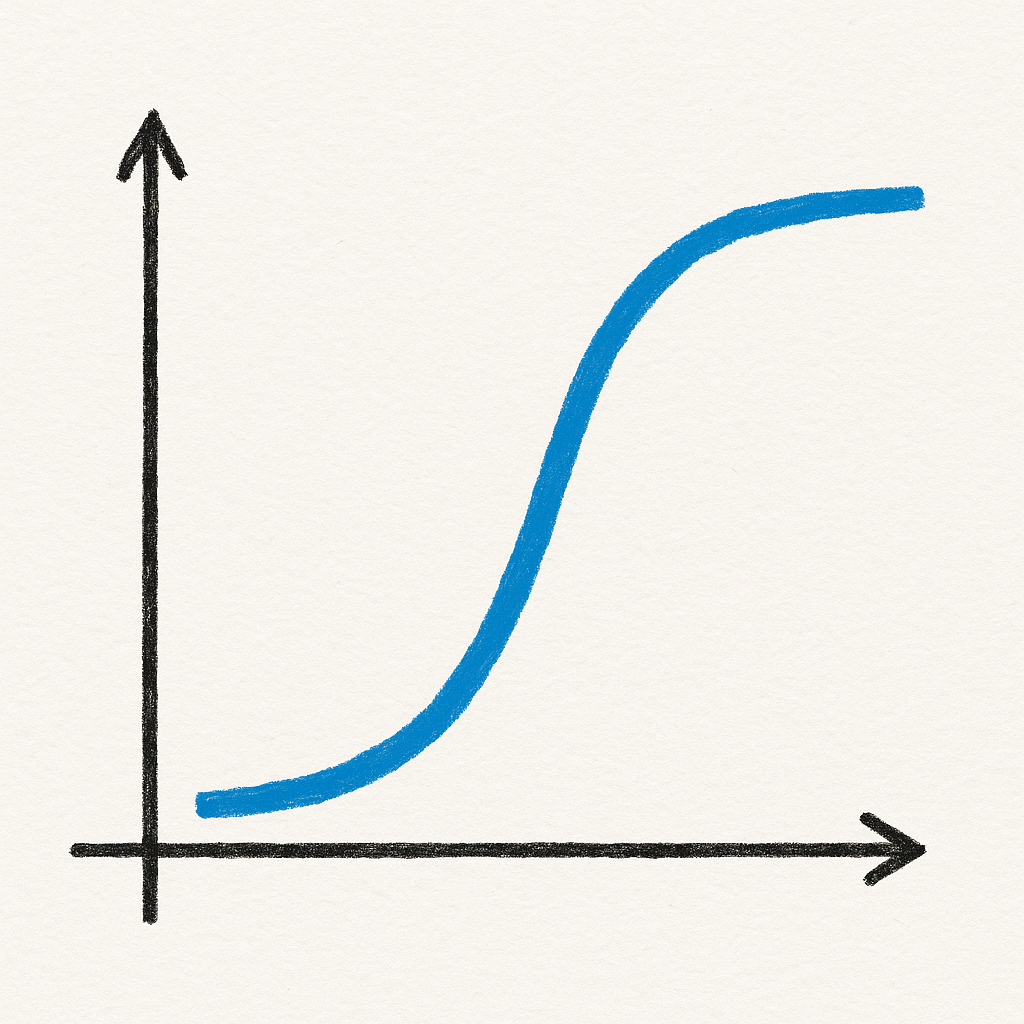Where are you on the sigmoid curve?
The sigmoid curve (aka the S-curve) has been used in disciplines like project management, biology, and finance for many years as a way to model growth and progress.
The name gives the shape of it away somewhat. The line starts in the bottom left corner, and moves right, staying pretty flat, and angling up slowly.
Then, at an inflection point, it starts angling up much more sharply, a period of rapid growth. But that never lasts. Inevitably, there’s another inflection point, and the line starts to dip down and plateau.
Slow growth where not much seems to happen, rapid growth for a while, then plateauing and back to little or no growth.
It’s true for biology. And it’s true for our own personal growth. (Hat tip to Whitney Johnson for first making this connection.)
If you’re still growing and progressing, then it’s helpful to understand how the S-curve works.
Where are you? And what’s your prime directive?
Each of the three phases is a fine place to be, if you know you’re in that place and you know what you need.
If you’re in the first phase (slow growth), I’d invite you to keep going. It’s easy to give up, because you’re putting energy and resources in, and not getting much back at the moment.
That’s where I am with Change Signal at the moment. I’ve been working on it for more than a year, it’s been live since February, and it’s growing, but it’s growing slowly.
My work at this moment is to keep refining the purpose of the project, get clear who it’s helping and how it’s different, to run small experiments, and to keep going.
If you’re in the second phase (rapid growth), I’d suggest the focus is to manage the overwhelm. Things are happening fast, it’s what you were hoping for, but you’re suddenly seeing things creaking and groaning … actually, it might be you who’s creaking and groaning.
We’ve just gone through that with The Conspiracy in the last year. We’ve grown as much in the past year as we did in the first four years — we have an extraordinary community there, and we’ve had to work hard to maintain that sense of intimacy and companionship.
We’ve also had incredible new benefits emerge — in a group of ~300 you’re much more likely to find specific help, useful thought partners, aligned projects, and so much more.
If you’re in the final phase (plateauing), let me encourage you to enjoy your mastery of the moment. This is what it means to feel on top of things. But also, a little restless, yes?
I was here in the final years when I ran Box of Crayons. I was lucky to have some mentors around me to nudge me on to what’s next. Stay here too long, and you ossify. Now’s the perfect time for you to leap to the next S-curve.
That’s no small thing. Not only do you need to let go of what’s past, but it means you start at the bottom of the curve again. That’s not only a reboot in skills, but nearly always a reboot in identity. You’re on a quest to find the next best version of you.
We unlock our greatness by working on the hard things
At the heart of How to Begin and my community, The Conspiracy is this deep belief: we unlock our greatness by working on the hard things.
When you feel the call to do the hard thing, whatever that is for you, then know you’ll be on the S-curve as you do it.
And whichever part of the S-curve is true for you right now, being in The Conspiracy makes things easier, less lonely, less overwhelming, and more likely to succeed.

